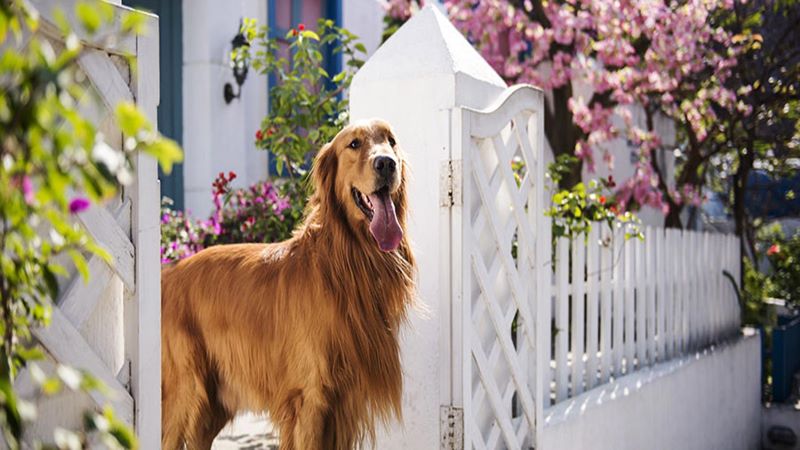Author and columnist Gladys Taber once said, “Being a good neighbor is an art which makes life richer.” Does your dog know the art of being a good neighbor? Read our tips to find out how your dog stacks up in the neighbor department.
- Does your dog respect his boundaries? If your dog is an outside dog or spends a fair amount of time alone outside, make sure you have a fence to keep him contained, or have trained him to stay within his own backyard. A fence does two things--keeps your dog from wandering into the neighbor’s yard, and keeps him safe, too. You can read Dr. Patty Khuly’s witty blog post, Good Fences Make Good Neighbors to get her take on the importance of containing your dog.
- Have you introduced your dog to your neighbors? It’s important to establish a good relationship between your neighbors and your dog. They will be more tolerant if they actually know your four-legged friend. Even if they are not “dog people,” you will still want to make sure they would recognize your dog and return him (or give you a call to let you know) if he gets out.
- Does your dog behave when you have to be away? Separation anxiety can cause many unwanted behaviors in dogs. According to the Petfinder article, Dogs Who Are Home Alone All Day, barking is one of the most common behaviors exhibited by dogs when they feel ignored or anxious. The article goes on to say, “Those who suffer from separation anxiety demonstrate despair by tearing up furniture or other household items, urinating or defecating, vocalizing, digging, running away or even self-mutilation, which is behavior that provides some sort of distraction.” If you must leave your dog alone, consider a dog walker or schedule playdates with other dog owners. You may also want to investigate getting a second dog or cat. See our post, Introducing a Second Dog for tips.
- If your dog has anxiety when you’re away, do you have a plan B? What if your dog experiences extreme separation anxiety, drives your neighbors up the wall with his barking, or becomes depressed? Consider doggy daycare, where your dog will get the attention and exercise he needs. Another option is taking your dog to work. According to a survey completed in 2000 by the AAHA, 19% of pet owners took their dogs to work at least once a month during the year. Having your dog at work also has benefits for you. In Jen Reeder’s blog post entitled The Many Benefits of Pets in the Workplace, Chris Meiering, director of innovation at Zuke’s, talks about the advantages of allowing pets in the workplace. At Zuke’s, a natural pet treat company in Durango, Colorado, an average day at the office includes 25 staff members and 10 dogs. Meiering says, “Having them by our side makes us happy, lowers our stress levels, and creates an environment that is comfortable, open, and flexible.” If taking your dog to work is not an option, consider working from home a couple of days a week.
- Do you pick up after your dog and obey leash laws? Do you obey dog walking etiquette? The first of these is pretty obvious. If you allow your dog to poop on the neighbor’s lawn and do not pick up after him, you are not going to be too popular. Neither is your dog! Make sure to carry bags to pick up waste whenever you are walking your pooch. Many neighborhoods have leash laws, requiring dogs to be on leash when they are away from home. Even if your dog is generally friendly, dogs can still be unpredictable and not everyone is comfortable around them. Be considerate and keep your dog on a leash when out for a walk.
Answer yes to these five questions and you’ll keep your neighbors singing, in the words of Mister Rogers, “Won’t you be my neighbor?” Celebrate National Good Neighbor Day on September 28 by being a good one!

